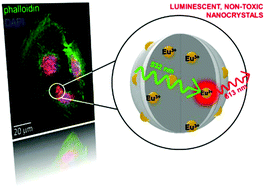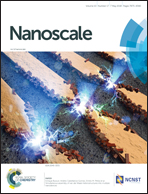Demonstration of cellular imaging by using luminescent and anti-cytotoxic europium-doped hafnia nanocrystals†
Abstract
Luminescent nanoparticles are researched for their potential impact in medical science, but no materials approved for parenteral use have been available so far. To overcome this issue, we demonstrate that Eu3+-doped hafnium dioxide nanocrystals can be used as non-toxic, highly stable probes for cellular optical imaging and as radiosensitive materials for clinical treatment. Furthermore, viability and biocompatibility tests on artificially stressed cell cultures reveal their ability to buffer reactive oxygen species, proposing an anti-cytotoxic feature interesting for biomedical applications.



 Please wait while we load your content...
Please wait while we load your content...